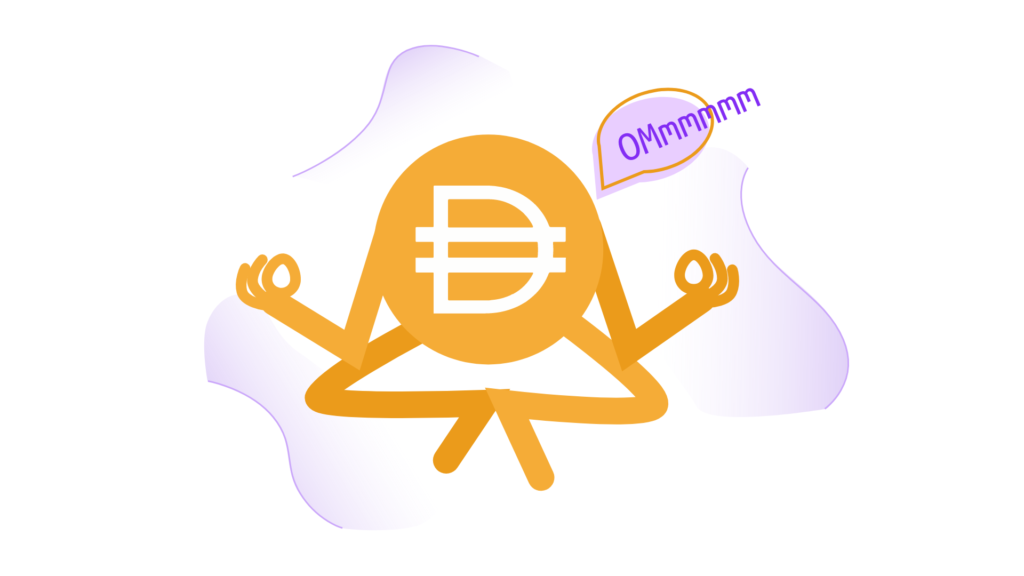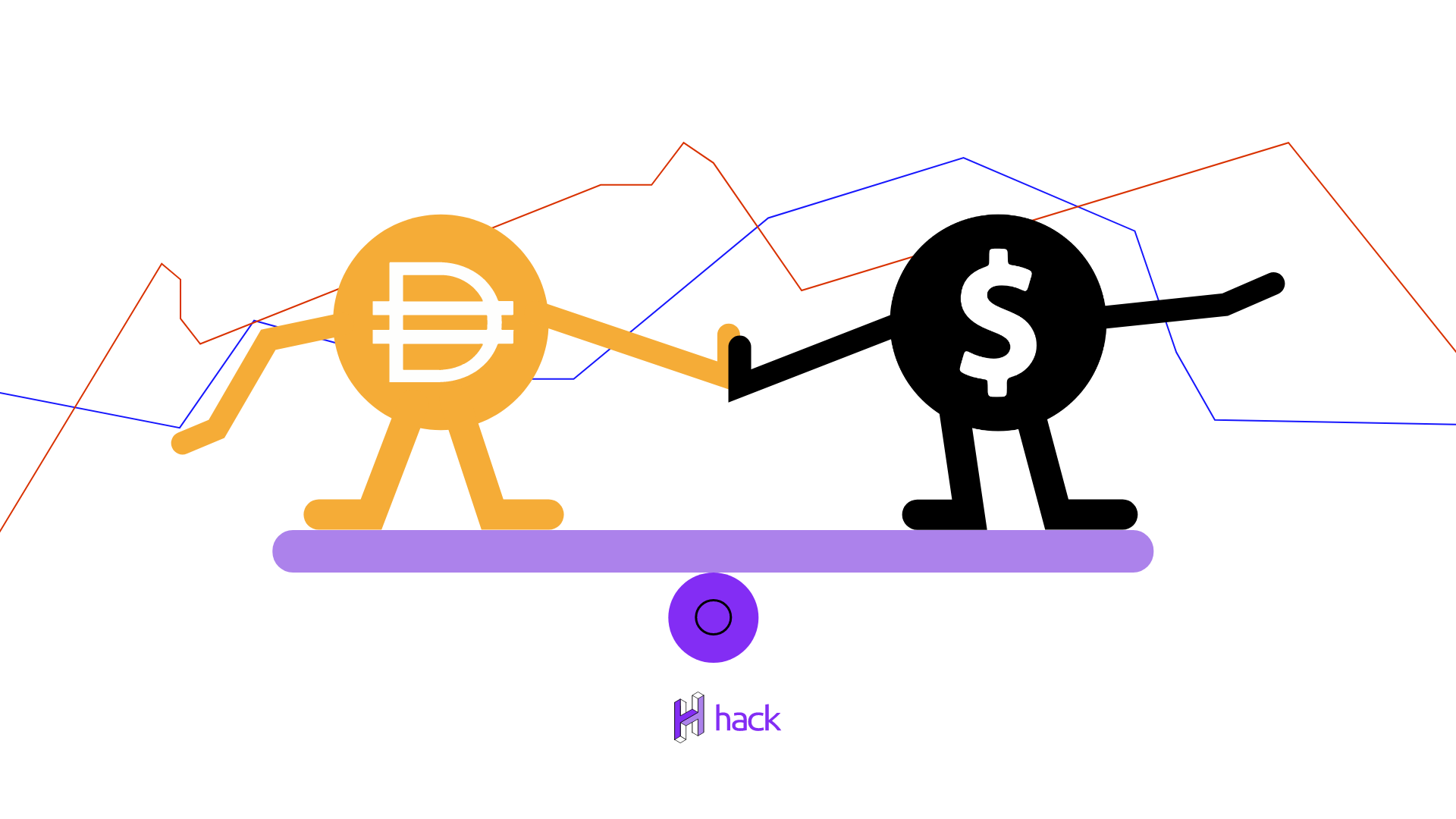Cryptocurrencies such as Bitcoin and Ethereum offer a number of benefits, and one of the most fundamental is not requiring trust in an intermediary institution to send payments, which opens up their use to anyone around the world. But one key drawback is that cryptocurrencies’ prices are unpredictable and have a tendency to vary, sometimes widely and rapidly.
So, what is stablecoin?
“A Stablecoin is a type of cryptocurrency whose value is tied to an outside asset, such as the U.S. dollar or gold, to stabilize the price.”
A stablecoin is a digital asset that remains stable in value against a pegged external traditional asset class. It reduces the price volatility by backing its value against a conventional asset, such as a combination of currencies, a single fiat currency, or other valuable assets. Stablecoins aim to create a stable and reliable environment to increase cryptocurrencies’ adoption and negate digital assets’ speculative nature. They offer the best of both worlds — security and decentralization of cryptocurrencies, with fiat currencies’ stability.
But, why the need for stablecoins?

Adopting cryptocurrencies as a direct replacement for conventional fiat currency requires stability; else the volatile currency can compromise the purchasing power of a holder. With Stablecoins one has no need to worry about volatility or instability of cryptocurrencies prices and can guarantee:
- Little to no volatility – The price of cryptocurrencies doesn’t fluctuate as frequently as popular cryptos like Bitcoin or Ether.;
- Global payment and remittance – Cross-border transactions with stablecoins are faster, cheaper, and more efficient than the traditional methods. They are not only costly but also take days to clear a single international payment. That is a lot of unnecessary weight and fees for payments, which could be simplified using stablecoins.;
- Protecting cryptocurrency traders – Stablecoins also protects traders and investors during volatile markets. In a bear market, they can protect their position by flipping their Bitcoin, Ethereum, or other cryptocurrencies to a stablecoin within seconds.
Types of stablecoin:
- Fiat-collateralized stablecoins
Fiat-collateralized stablecoins are, as the name suggests, backed by sovereign currency such as the pound or the US dollar. These are the most common types of stablecoins backed at a 1:1 ratio, meaning one stablecoin can be exchanged with one unit of currency. For each stablecoin that exists, there is fiat currency held in the treasury to back it up. The aim is to back a stablecoin by real fiat in real bank accounts. Though this stablecoin’s category is most simple, it is the most centralized, too. A central entity acts as the fiat reserve custodian and manages the whole process of issuing fiat-backed tokens and receiving new fiats.
- Crypto-Backed stablecoins
A crypto-backed stablecoin operates just like a fiat-backed stablecoin. However, instead of using fiat as collateral, cryptocurrencies are locked up as collateral that backs up the crypto-backed stablecoin. The token used to back the stablecoin uses a ‘security pledge’ to compensate for the price fluctuation.
- Non-Collateralized (Algorithmic) stablecoin
Non-collateralized stablecoins are those that do not involve the use of any reserve asset. Instead, their stability is derived from an algorithm-generated mechanism (or smart contracts)
- Commodity-backed stablecoins
Interchangeable assets, like precious metals, back commodity-backed stablecoins. The most common commodity used to back these stablecoins is gold, but they can also be backed by real estate, oil, or other precious metals. The collateral is often stored in a vault of a trusted third party. The stablecoins entitle a purchase to redeem the coin with a commodity.
Most popular stablecoins:
Tether
Tether is one of the oldest stablecoins, launched in 2014, and is the most popular to this day. It’s currently one of the most valuable cryptocurrencies overall by market capitalization and its primary use case is moving money between exchanges quickly and taking advantage of arbitrage opportunities when the price of cryptocurrencies differs on two exchanges. Traders can make money on this discrepancy.
Diem
Diem is a stablecoin in the works, originally conceived by the worldwide social media platform Facebook. Initially, the Diem Association, the consortium set up by Facebook, said Diem would be backed by a “basket” of currencies, including the U.S. dollar and the euro. But due to global regulatory concerns, the association has since backed off from its ambitious original vision. Instead, it is now planning to focus on developing multiple stablecoins, each backed by a separate national currency.
USD Coin
Launched in 2018, USD Coin is a stablecoin managed jointly by the cryptocurrency firms Circle and Coinbase through the Centre consortium. Like Tether, USD Coin is pegged to the U.S. dollar. It is the second-largest stablecoin by market capitalization.
Dai
Running on the MakerDAO protocol, Dai is a stablecoin on the Ethereum blockchain. Created in 2015, the cryptocurrency aims to keep its value as close to one United States dollar (USD) as possible through an automated system of smart contracts on the Ethereum blockchain. Dai is maintained and regulated by MakerDAO, a decentralized autonomous organization (DAO) composed of the owners of its governance token, who may vote on changes to certain parameters in its smart contracts in order to ensure the stability of Dai.
DOGEO

Dogecoin was created in 2013 purely as a joke to reference the internet’s favourite Shiba Inu dog meme. Dogecoin (DOGE) is expected to soon be available for use as collateral in minting the dollar-pegged $DOGEO stable coin at OpenDAO!
The future of stablecoins
Stablecoins have existed in the cryptocurrency space for a few years, but only gained prominence in the last year or so. Even though they are relatively new their purpose can go way beyond being just a financial contract.
We are talking here about the evolution of the traditional payment system.
There is now a new form of digital money controlled algorithmically instead of a central authority that offers similar monetary benefits as fiat currencies. Stablecoins have the potential to open new doors to the mainstream adoption of digital assets in our day-to-day life, changing the global payment landscape (for good).
Still, stablecoins are in their infancy, and it may take a while before we see them used in the digital space, but it sure sounds like they are here to stay.



